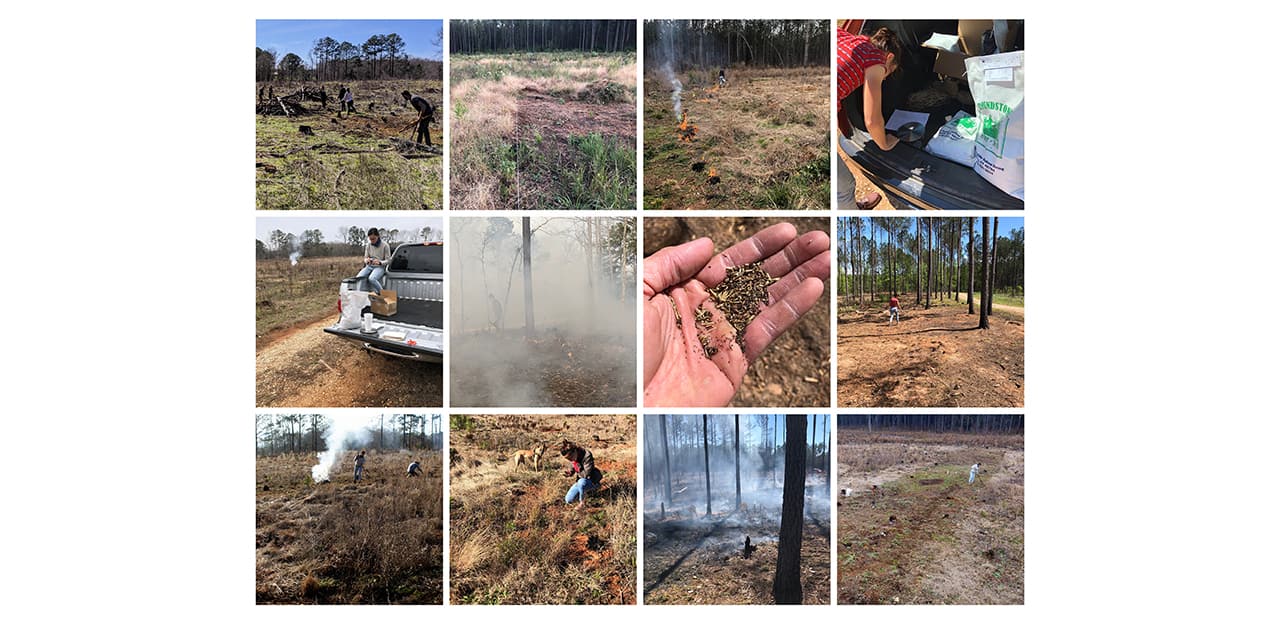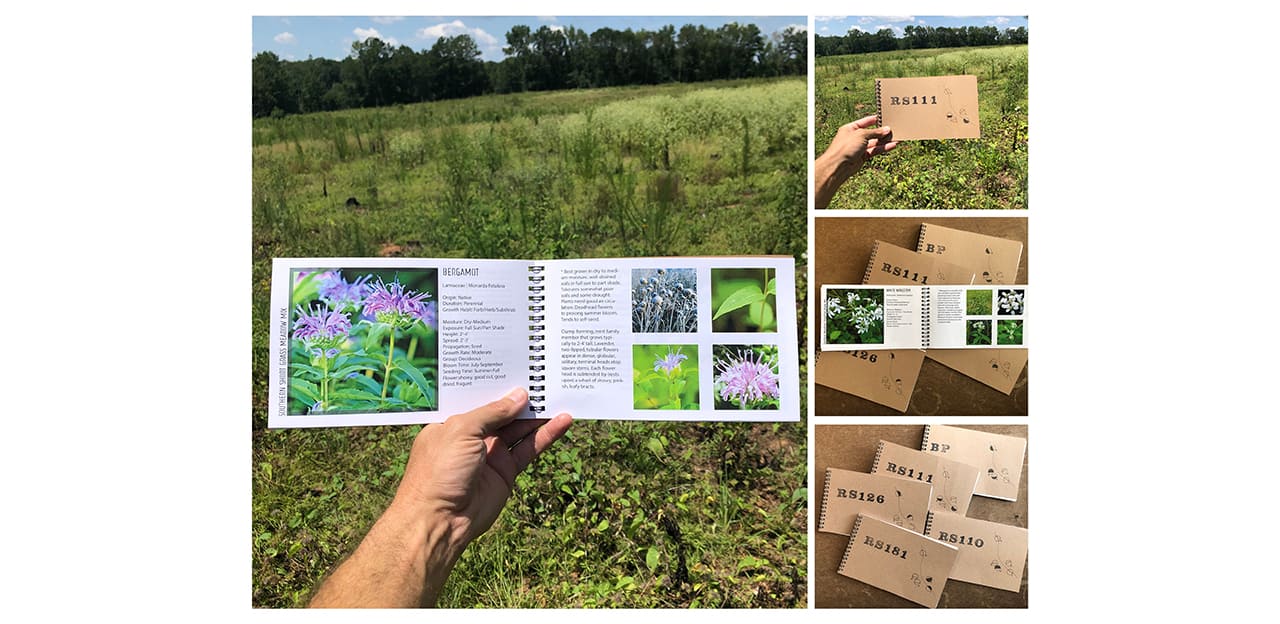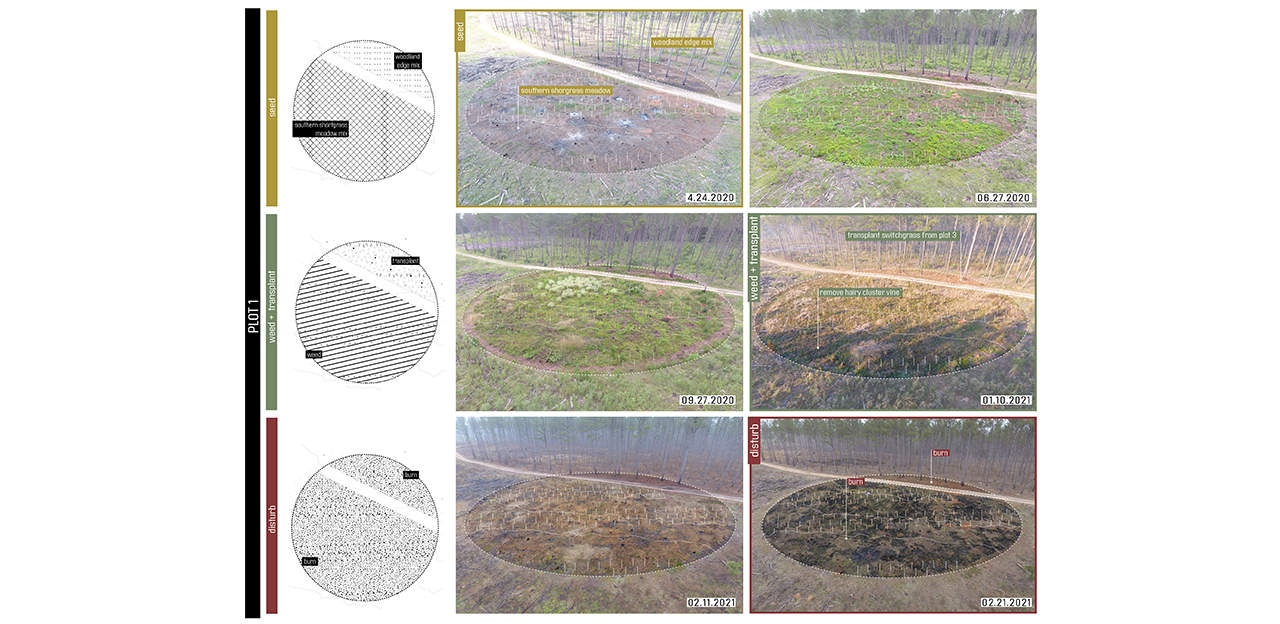Landscape Architecture Professors Research Collaboration Recognized

The School of Architecture, Planning and Landscape Architecture (APLA) is proud to announce that Alabama Meadows project has received a 2021 Honor Award in Research from Alabama American Society of Landscape Architects (ASLA).
Alabama Meadows, a collaboration between Program Chair and Associate Professor of Landscape Architecture, David Hill, and Assistant Professor of Landscape Architecture, Emily Knox, is a field-based research project that seeks to re-build knowledge about the largely eradicated southeastern meadow landscape typology. In the Spring of 2019, five 150’ in diameter, circular test plots of grasses and forbs were surgically inserted into an existing mosaic of forest patches, soil types, shade densities and hydrological intricacies at the Mary Olive Thomas Demonstration Forest. Since then, hours of fieldwork, labor and observation by faculty, graduate research assistants and students have led to numerous discoveries about this ecologically critical and culturally significant landscape type.
Expansive meadows and grasslands once thrived in the state of Alabama. These landscapes were host to thousands of native and endemic species, including pollinators, insects, and small mammals. Due to agricultural activities, urbanization, and the suppression of natural wildfires, grasslands have been all but eradicated from the state. According to Southeastern Grasslands Initiative (SGI), these landscapes have dwindled down to less than 10% of their historic range. Though historically misunderstood and under-valued, the re-introduction of meadows and grasslands to the southern landscape has the potential to provide impactful ecological and cultural value to the region. In a landscape otherwise dominated by regimented commercial forestry, agriculture and suburbia, the Alabama Meadows test plots offer a path to the development of alternatives to the static, controlled landscapes of the south by creating immersive spaces rich in variety, light and texture.
The test plots are continuously generative, and each one is in a constant state of change, manipulation, and observation – being weeded, pruned, burned, mowed, re-seeded, drawn, droned and modeled – as the researchers seek new knowledge, insights and methods. The plots will enter their 3rd growing season this spring. As they continue to establish in the demonstration forest, they will also expand as a research and teaching tool for landscape architects in the school and in practice.
Fully funded by a 2019 College of Architecture, Design and Construction (CADC) seed grant, this project wouldn’t have been possible without the constant support of Dr. Becky Barlow and Dr. John Kush of the AU School of Forestry and Wildlife Sciences and a small army of landscape architecture graduate research assistants.
Related people:
David Hill, Emily Knox















